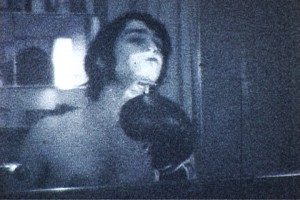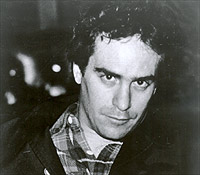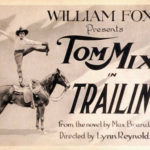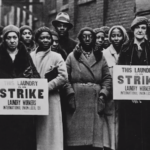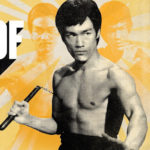For-Real Bogus Boxing Saved from the Trash
Film-Makers’ Cooperative will use a grant from the National Film Preservation Foundation to care for part one of rock critic Richard Meltzer’s idiosyncratic 1969 film about boxing, Bogus Boxing Trash
Old rockers sometimes alert their teenaged children that, back in the day when they trekked barefoot in deep snow the 17 miles to school, not only were there no cell phones but – egad! – there were not even rock critics.
Observers who could shape discussions about popular music’s claims to importance emerged from a time in the late 1960s when any commentary on music, as distinct from fan rave, was lucky to get a few inches of print. The observers’ undertaking – to evade the inanity of popular performers’ legends – was gradual in coming. Among the pioneers of the new approach in the United States were Ellen Willis and Robert Christgau, as well as Richard Meltzer, a devotee of both music and a purportedly sweeter science: boxing.
Meltzer completed his 250-minute film Bogus Boxing Trash in 1969. He made some of it in black and white, some in color, much of it irregularly captured, and all silent. He was at the time in the throes of exploring a range of artistic forms; that multi-genre engagement emerges in comments on the film in which he conjoined the sound, vision, and cultural dimensions of pugilism in a sort of synesthetic blur: “It’s silent, sure, but only until you enter the picture. It’s so exciting you’ll be doing the yelling yourself. All the thrills and chills of the sport of boxing, legalized human butchery as old as time itself.”
It was a rich time is Meltzer’s artistic formation. In 1970, aged only 25, he published with De Capo his The Aesthetics of Rock, one of the first books of rock criticism. Still highly regarded, it resulted from his obsessive interest in the art form while studying philosophy between 1965 and 1968 at what is now Stony Brook University, in New York State. He copped flak for writing about rock in philosophy papers, but persisted and was eventually thrown out of graduate studies at Yale University. In a 1987 De Capo reissue, esteemed cultural historian Greil Marcus called the book “the best and most obsessive book about the Beatles ever written” as it evokes “the collapse of art into everyday life, and vice versa.”
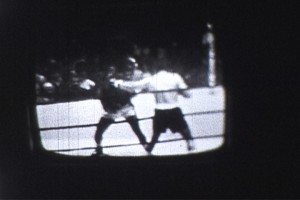 Meltzer (1945-) schooled himself as much in the arts as in journalism. He likened rock criticism to any practice of art, whether in the plastic arts, music, or moving images. He demonstrated this in films of his own that reflected his studies with Alan Kaprow, a proto-performance artist and principal figure in the arts movement Fluxus; he also interacted with three concertedly idiosyncratic filmmakers – experimentalists Peter Kubelka and Kenneth Anger and multi-genre and life-as-performance artist Andy Warhol. He was also an early lyricist for the rock band Blue Öyster Cult, and would go on to write in various genres including fiction; his The Night Alone: A Novel appeared in 1995.
Meltzer (1945-) schooled himself as much in the arts as in journalism. He likened rock criticism to any practice of art, whether in the plastic arts, music, or moving images. He demonstrated this in films of his own that reflected his studies with Alan Kaprow, a proto-performance artist and principal figure in the arts movement Fluxus; he also interacted with three concertedly idiosyncratic filmmakers – experimentalists Peter Kubelka and Kenneth Anger and multi-genre and life-as-performance artist Andy Warhol. He was also an early lyricist for the rock band Blue Öyster Cult, and would go on to write in various genres including fiction; his The Night Alone: A Novel appeared in 1995.
Among his less-predictable formative influences was boxing, which had inspired filmmakers since the medium’s earliest days. In 1969 he released one of the most distinctive of the vast number of films about the sport, and as with his writing about music, what set the film apart was the way it not merely reflected the activity, but rather reflected on it.
The film is held at the Film-Makers’ Cooperative, and that artist-run nonprofit in New York city recently received a grant from the National Film Preservation Foundation to help it to preserve part of the film.
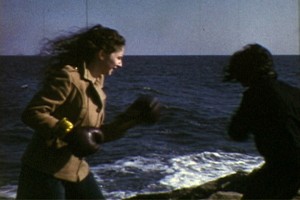 The Cooperative is the largest archive and distributor of independent and avant-garde films in the world. Created by artists in 1961, as the distribution branch of the New American Cinema Group, the Coop has more than 5,000 films, videotapes and DVDs in its collection.
The Cooperative is the largest archive and distributor of independent and avant-garde films in the world. Created by artists in 1961, as the distribution branch of the New American Cinema Group, the Coop has more than 5,000 films, videotapes and DVDs in its collection.
Archivists there said in making their request for support that the film’s significance extends beyond its capturing so many aspects of boxing in so distinctive a way; it also “sheds light on the influence of the plastic arts and film-making on the music criticism for which he is most well known.” That stands to reason because Meltzer was making his film at the same time he was writing The Aesthetics of Rock. Considering contemporaneously the capabilities and nature of a variety of forms of popular engagement and expression seemed to permit him to bring them into telling perspectives – to relate, for example, the influence avant-garde film had on rock criticism.
The Film-Makers’ Cooperative describes Bogus Boxing Trash as a lush, inventive, and perceptive dissection of boxing as American ritual in which Meltzer “sees the avant-garde artist as the prankster and Mohammad Ali as the ideal pop culture instantiation of it. Embodying this approach behind and in front of the camera, he creates a work at once funny, edifying, and inspiring all the while subverting expectations of the audience.”
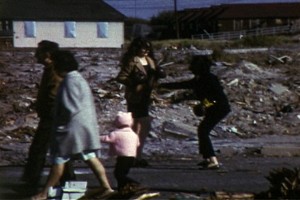 They add that “the film has a deep musicality evoking the concept of the Fluxus ‘event’ but with rock and jazz as the invisible guiding score. It has an entrancing rhythm that interweaves long duration shots, quick cuts, in-camera editing of TV décollage filmed from his own TV set, boxing ‘happenings’ masterminded by Meltzer on the rooftops of Manhattan tenement houses, and romantically framed images of him looking into his bathroom mirror.”
They add that “the film has a deep musicality evoking the concept of the Fluxus ‘event’ but with rock and jazz as the invisible guiding score. It has an entrancing rhythm that interweaves long duration shots, quick cuts, in-camera editing of TV décollage filmed from his own TV set, boxing ‘happenings’ masterminded by Meltzer on the rooftops of Manhattan tenement houses, and romantically framed images of him looking into his bathroom mirror.”
Meltzer has spoken in a distinctly pranksterish tone of the film as he conceived and viewed it. Among elements that he has highlighted have been “all the savage glory of the Olympics, including George Forman’s now-famous flag ceremony; two females having at each other (we don’t approve of the fairer sex fighting but here it is in all its raw torrid brutality); … all-time mauler Sonny Liston KO’ing Roger Rischer; Bob Foster’s crushing KO of Biafran Dick Tiger; man vs. dog (who will win?) and man vs. woman!”
He has sung that “Oscar Bonavena, mad bull of the Pampas, pits his height advantage and wild ringside antics against the primitive power and cunning of champ Joe Frazier.” He has celebrated “the much heralded Bob Foster-Frankie DePaula bloodbath at Madison Square Garden, as race is pitted against race and Jersey City seeks its place in the sun beside New York.”
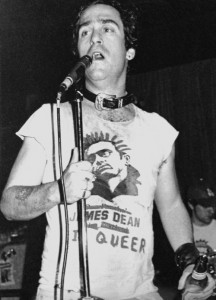 He exhorted his viewers not to miss his boxing sequence with Janis Joplin, “slambang action as the one the only Muhammad Ali (Cassius Clay) throws hits wits and fists against William Buckley in Ali’s first film since ‘Requiem for a Heavyweight,” or James Earl Jones “in his gutsy portrayal of the late great Jack Johnson, all-time heavyweight great.”
He exhorted his viewers not to miss his boxing sequence with Janis Joplin, “slambang action as the one the only Muhammad Ali (Cassius Clay) throws hits wits and fists against William Buckley in Ali’s first film since ‘Requiem for a Heavyweight,” or James Earl Jones “in his gutsy portrayal of the late great Jack Johnson, all-time heavyweight great.”
Expect, he has said, “the poetry of Jack Dempsey’s 18-second demolition job on the gargantuan Fred Fulton. Shadow boxing: the key to fistic prominence. Enough TV ringside action to send you thirstily scurrying for your can of Schlitz. Plus: leather-fisted artsy-fartsy with mirrors!”
That “artsy-fartsy” was perhaps mock-derogatory, for he makes a plausible claim to a film-boxing kinship: “Boxing is lots of punches, film is lots of frames, here’s a fragmentation of both you won’t want to miss. If you thought [experimental filmmaker Stan Brakhage was something, you’ll laugh up your sleeve at the old gopher when you see this one.”
As the folks at Film-Makers’ Cooperative have successfully contended, Bogus Boxing Trash is not a film that should be left to molder.
— P.M.
Previous Post: From Coitus Interruptus to Guaranteed-to-Last
Next Post: At the Fair with Bob Hope; on the Hustings with Robert W. Scott

